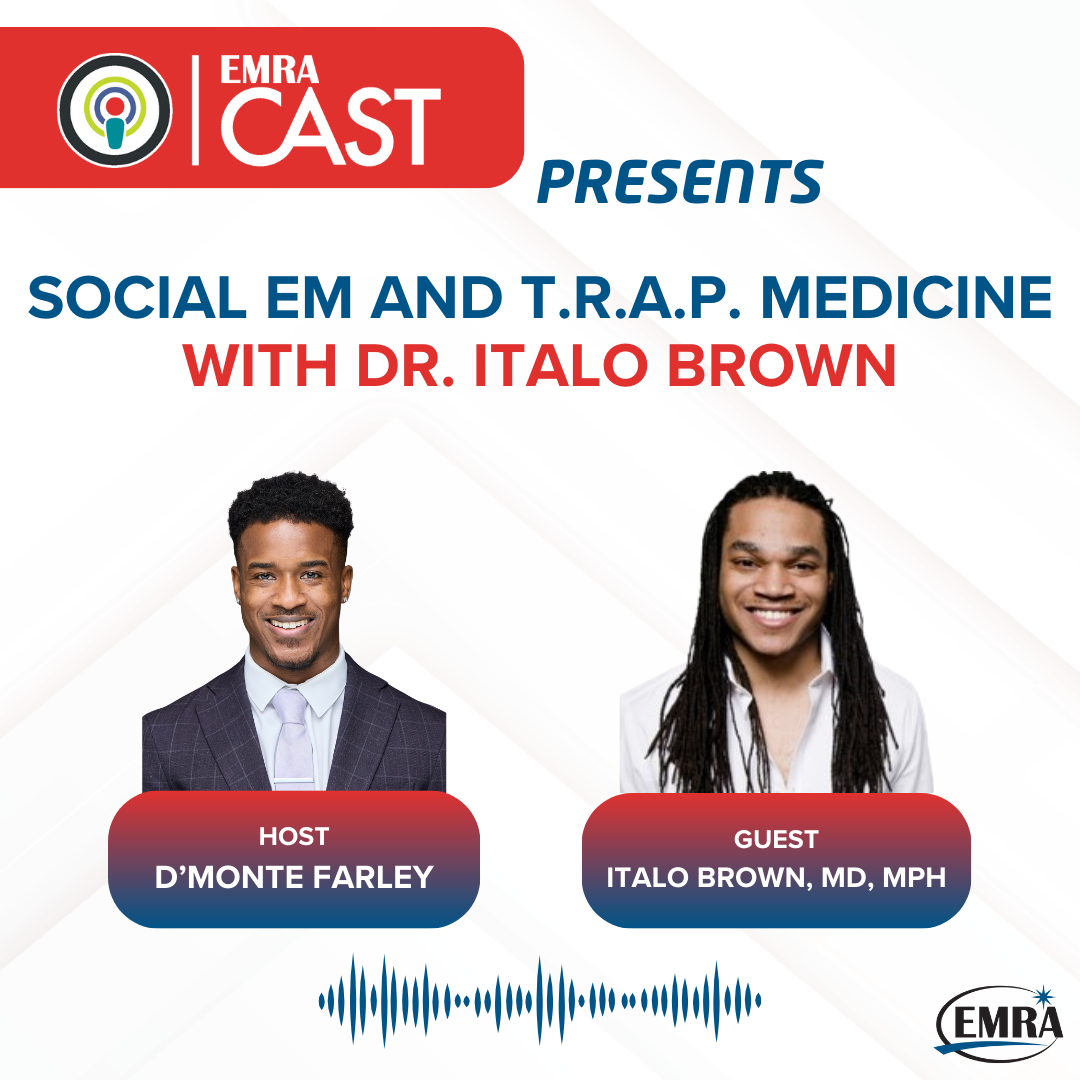Social EM and T.R.A.P. Medicine
Social EM and T.R.A.P. Medicine
Feb. 1, 2025
EMRA*Cast host D'Monte Farley, MD, talks to social EM leader Italo Brown, MD, MPH, of Stanford University, about using public health strategies to tackle social determinants of health and bring care to the community. Case in point: T.R.A.P. Medicine's barbershop outreach.
Host
D'Monte Farley, MD
Loyola University Stritch School of Medicine
Class of 2025
@tiarretp
EMRA*Cast Episodes
Guest
Italo Brown, MD, MPH
Stanford University
Social Justice & Health Equity Curriculum Thread Lead – Stanford School of Medicine
@gr8vision on X and Instagram
T.R.A.P. Medicine
OVERVIEW
Emergency physicians can be described as "doctors of the community" who deploy the resources at their disposal to ensure better health outcomes their patients, inside and outside the hospital. Today’s discussion will identify social components of health that can impact patient care. Dr. Italo Brown joins EMRA*Cast host Dr. D'Monte Farley to speak on T.R.A.P. medicine, an initiative he has undertaken to make a difference.
Discussion
- EM doctors are doctors of the community
- The principles behind large-scale public health can be deployed at the community level
Part 1:
- The lens of public health and how it can lead to certain health outcomes
- Public health training can be applied to academia
- Effective community health outreach often uses strategies from public health principles
Part 2:
- Social Determinants of Health impact how people experience health care.
- Education
- Insurance
- Employment
- Other factors, including housing and transportation, can determine the course of treatment you prescribe.
Part 3:
- T.R.A.P. Medicine – What is it?
- Trust/Research/Access/Prevention – a mission and initiative founded by Jahmil Lacey
- “Providing care through barbershops”
- Providing culturally relevant care
- Discussions of logistics surrounding T.R.A.P. Medicine
- “Safe space” environment to establish sense of normalcy of healthcare conversations
Part 4:
- Strategies to get involved in the community
- Understand the playing field – identify who is doing/has done the work
- Start small: interventions do not have to be elaborate immediately
- SUSTAINABILITY! Maintain the trust and support of the community once given access
Key Resources
TRAP Medicine: https://www.trapmedicine.org/
References
- McHenry R, Aspden C, Quinn J, Loughrey JP, Chung D. At the deep end: towards a social emergency medicine. Emerg Med J. 2024;41(10):628-629.
- Shufflebarger EF, Willett M, Sontheimer SY, Hicks S, Khoury CA, Walter LA. Feasibility of a Multifaceted Social Emergency Medicine Curriculum for Emergency Medicine Residents. West J Emerg Med. 2023;24(3):495-501.





